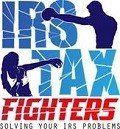2. Offer in Compromise (OIC)
An Offer in Compromise allows eligible taxpayers to settle their tax debt for less than the full amount owed. The IRS considers factors such as income, expenses, and asset equity when evaluating OIC applications.
Key Benefits:
• Potentially reduces your overall tax liability.
• Provides a fresh start if approved.
Considerations:
• Strict eligibility criteria.
• Requires full disclosure of financial information.
• The application process can be time-consuming.
3. Currently Not Collectible (CNC) Status
If you’re experiencing financial hardship and cannot pay your tax debt, you may qualify for Currently Not Collectible (CNC) status. This status temporarily halts IRS collection efforts, such as wage garnishments or levies.
Key Benefits:
• Provides immediate relief from collection actions.
• Allows you to focus on improving your financial situation.
Considerations:
• Interest and penalties continue to accrue.
• The IRS will review your financial situation periodically to determine if CNC status should continue.
CNC status can be a lifeline for those in financial distress.
4. Penalty Abatement
The IRS may waive penalties for taxpayers who can demonstrate reasonable cause for failing to pay or file their taxes on time. Examples of reasonable cause include illness, natural disasters, or unavoidable financial setbacks.
Key Benefits:
• Reduces the overall amount owed.
• Encourages compliance moving forward.
Considerations:
• Does not eliminate the tax debt itself.
• Requires thorough documentation to support your request.
5. Innocent Spouse Relief
If your tax debt is the result of a spouse’s or former spouse’s actions, you may qualify for Innocent Spouse Relief. This option removes your liability for taxes, penalties, and interest caused by your spouse’s errors or omissions.
Key Benefits:
• Protects you from being held accountable for someone else’s actions.
• Provides relief in cases of unfair financial burden.
Considerations:
• Only applies to certain types of tax debt.
• Requires detailed evidence to support your claim.
6. Bankruptcy
In some cases, tax debt can be discharged through bankruptcy. However, this option is subject to strict eligibility criteria, and not all tax debts are dischargeable.
Key Benefits:
• Offers a potential fresh start.
• Can eliminate other financial obligations in addition to tax debt.
Considerations:
• Significant impact on your credit score.
• Complex legal process requiring professional guidance.
If you’re considering bankruptcy as a solution, consult with a tax resolution expert to understand how it may affect your tax debt.
How to Choose the Right Option
Selecting the right tax debt resolution option depends on several factors, including:
• The total amount of your debt.
• Your current financial situation.
• Your long-term financial goals.
Common Mistakes to Avoid
When resolving tax debt, it’s important to avoid common pitfalls that can complicate your situation:
1. Ignoring IRS Notices: Responding promptly to IRS communications can prevent escalation.
2. Choosing the Wrong Resolution Option: Selecting an option without fully understanding its implications can lead to more problems.
3. Filing Incomplete or Inaccurate Information: Errors on forms or applications can delay the process or result in rejection.
4. Failing to Seek Professional Help: Navigating tax debt resolution on your own can be overwhelming and increase the risk of mistakes.
Take Action Today
Dealing with tax debt can be stressful, but you don’t have to face it alone. Whether you’re considering an Installment Agreement, Offer in Compromise, or another resolution option, IRS Tax Fighters is here to guide you every step of the way.
Call us at 281-962-0070 to schedule a consultation. Together, we’ll create a plan to resolve your tax debt and help you achieve financial peace of mind.


